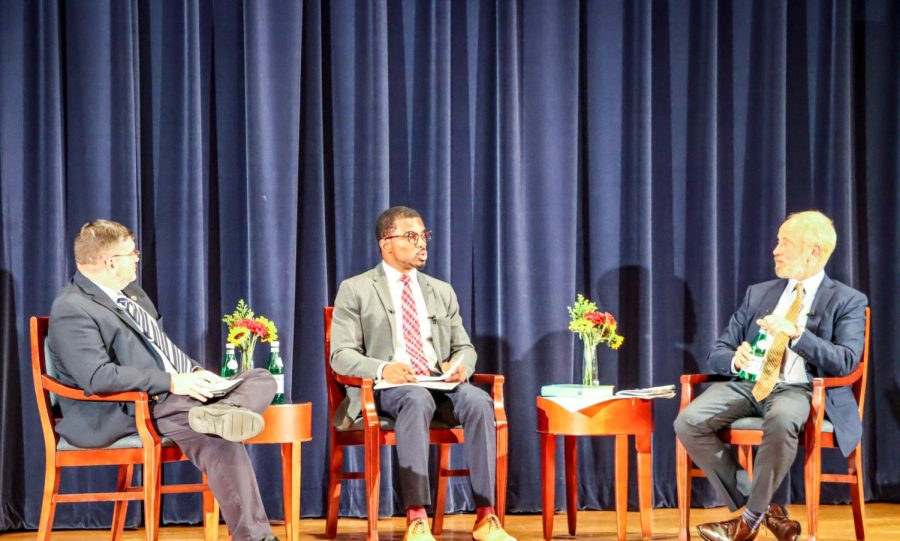GV hosts Constitution Day Celebration to discuss history, future of U.S. Constitution
Sep 26, 2022
To commemorate the week of Constitution Day, Grand Valley State University hosted authors and scholars John Kowal and Wilfred Codrington III for a Constitution Day Celebration.
On Sept. 22 at the Charles W. Loosemore Auditorium, Kowal and Codrington discussed the history of the U.S. Constitution and what it means for the future.
Kowal, vice president of program initiatives at the Brennan Center at New York University School of Law and co-author of the book “The People’s Constitution: 200 Years, 27 Amendments and the Promise of a More Perfect Union,” told attendees a surprising fact regarding the content of the Constitution.
“Over 40% of our Constitution was added after the Constitutional Convention of 1787,” said Kowal.
Much of what Americans recognize as their constitutional rights were only added after times of intense social and economic turbulence.
Making amendments to the Constitution is no easy feat. It requires two-thirds approval from both houses of Congress and three-fourths of the state’s approval. Kowal and Wilfred Codrington III – a constitutional law professor at Brooklyn Law School the other and the second co-author of the book – wanted to give new energy to the American people in regards to amending this historical document.
“Difficult is not impossible,” Kowal said.
When asked by the event’s host, Brent Holmes, why the two chose to author the book at this point in time, Codrington spoke of the 2016 presidential election in which the president lost the popular vote.
“This happened twice in two centuries, and so we thought, ‘In this time, how could that be possible?’” Codrington said. “But that wasn’t just it. There were other problems we started to think about. We thought about problems maybe with the Supreme Court, problems with Congress (and) all sorts of problems that are affecting our democracy.”
Codrington and Kowal looked to pass amendment processes as models for modern Americans to reform their Constitution, which they illustrated in their book.
“Unless people are going to be committed to long-term change, then nothing’s going to change,” Kowal said later in the event.
This rings true when examining the circumstances surrounding the past 27 amendments. Historically, waves of amendments come about during particularly tumultuous times. Examples of this include formative amendments passed during the Reconstruction Era from 1863 to 1877, the Progressive Era from 1896 to 1916 and the civil rights movement of the 1950s and 1960s.
During these times, people were alight with the spirit of reformation and radical change. Socioeconomic shifts, political transitions and many opposing opinions created the perfect storm to spur the people and the government into considering constitutional amendments.
“Often, before we (amend the Constitution), we think it’s impossible to do it,” Codrington said. “We get to a period where it looks like the nation is going to collapse.”
Both Codrington and Kowal said they agree that America in the 21st century is following a similar timeline to when past amendments were ratified.
Kowal cited the #MeToo movement that has gained prominence over the past several years as an example of social upheaval. There are recurring themes, such as “intense polarization” between parties of differing viewpoints. The differences between schools of thought have become extremely apparent, emphasized and exacerbated by the easy access to information via social media.
“We see that the Constitution is amended in or around periods of crisis, or war or pandemic,” Codrington said. “Those are the types of things that we have seen as consistent themes.”
Any potential upcoming wave of constitutional amendments cannot, however, occur without passion for a cause and hard work.
For the purpose of ensuring one’s voice is heard, students are encouraged by the university to take part in on-campus voter registration events and register themselves to vote in the upcoming November midterm elections.






















